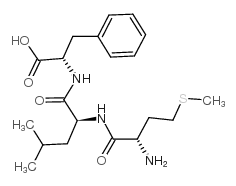Impaired chemotaxis and cell adhesion due to decrease in several cell-surface receptors in cathepsin E-deficient macrophages.
Takayuki Tsukuba, Michiyo Yanagawa, Kuniaki Okamoto, Yoshiko Okamoto, Yoshiyuki Yasuda, Keiichi I Nakayama, Tomoko Kadowaki, Kenji Yamamoto
Index: J. Biochem. 145(5) , 565-73, (2009)
Full Text: HTML
Abstract
Cathepsin E is an endo-lysosomal aspartic proteinase exclusively present in immune system cells. Previous studies have shown that cathepsin E-deficient (CatE(-/-)) mice display aberrant immune responses such as atopic dermatitis and higher susceptibility to bacterial infection. However, the mechanisms underlying abnormal immune responses induced by cathepsin E deficiency are still unclear. In this study, we found that the cell-surface levels of chemotactic receptors, including chemokine receptor (CCR)-2 and N-formyl peptide receptors (FPRs), were clearly diminished in CatE(-/-)macrophages compared with those in wild-type cells. Consistently, chemotaxis of CatE(-/-)macrophages to MCP-1 and N-formyl-methionyl-leucyl-phenylalanine was also decreased. Similar to the chemotactic receptors, the surface expressions of the adhesion receptors CD18 (integrin beta(2)) and CD 29 (integrin beta(1)) in CatE(-/-) macrophages were significantly decreased, thereby reducing cell attachment of CatE(-/-) macrophages. These results indicate that the defects in chemotaxis and cell adhesion are likely to be involved in the imperfect function of CatE(-/-)macrophages.
Related Compounds
| Structure | Name/CAS No. | Molecular Formula | Articles |
|---|---|---|---|
 |
met-leu-phe acetate salt
CAS:59881-08-2 |
C20H31N3O4S |
|
A novel peptide-grafted liposomal delivery system targeted t...
1998-02-01 [Antimicrob. Agents Chemother. 42(2) , 348-51, (1998)] |
|
Band-selective carbonyl to aliphatic side chain 13C-13C dist...
2004-01-28 [J. Am. Chem. Soc. 126(3) , 948-58, (2004)] |
|
Arachidonic acid release in rabbit neutrophils.
1989-02-01 [Biochem. J. 257(3) , 633-7, (1989)] |
|
Alpha-1-antichymotrypsin inhibits the NADPH oxidase-enzyme c...
1992-11-01 [J. Immunol. 149(9) , 3059-65, (1992)] |
|
The interaction of 3,5-pyrazolidinedione drugs with receptor...
1991-03-01 [Can. J. Physiol. Pharmacol. 69(3) , 419-25, (1991)] |